by Jon LeSage, editor and publisher, Green Auto Market
Here’s my take on the 10 most significant and interesting occurrences during the past week…….
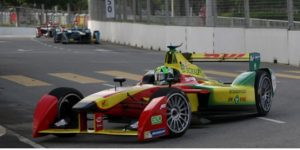 1. Formula E series: Lucas di Grassi drove his Abt Schaeffler Audi Sport electric racer for a perfect score to win the FIA Formula E Faraday Future Long Beach ePrix on Saturday. The driver had recently had his Formula E victory in Mexico City taken away after a post-race disqualification, so the victory in Long Beach and regaining the series point lead was a big win for the team. This victory is taking place during the second annual FIA Formula E series at its stop in Long Beach, Calif. Faraday Future was recently named the title sponsor for the 2016 Long Beach ePrix, the sixth stop on the 2015/2016 Formula E race season. Formula E was started up by veteran Spanish racing promoter Alejandro Agag, and was officially launched in September 2014 in Beijing. Sponsors and promoters of the race series are quite hopeful Formula E will educate and inspire people to see the potential of electric drives to power vehicles of all types quietly and with zero emissions.
1. Formula E series: Lucas di Grassi drove his Abt Schaeffler Audi Sport electric racer for a perfect score to win the FIA Formula E Faraday Future Long Beach ePrix on Saturday. The driver had recently had his Formula E victory in Mexico City taken away after a post-race disqualification, so the victory in Long Beach and regaining the series point lead was a big win for the team. This victory is taking place during the second annual FIA Formula E series at its stop in Long Beach, Calif. Faraday Future was recently named the title sponsor for the 2016 Long Beach ePrix, the sixth stop on the 2015/2016 Formula E race season. Formula E was started up by veteran Spanish racing promoter Alejandro Agag, and was officially launched in September 2014 in Beijing. Sponsors and promoters of the race series are quite hopeful Formula E will educate and inspire people to see the potential of electric drives to power vehicles of all types quietly and with zero emissions.
2. VW and dealers: Volkswagen brand CEO Herbert Diess talked to media and to dealers during the National Automobile Dealers Association convention to deal with the diesel car emissions reporting scandal. Jason Kuhn, owner and Chairman of Kuhn Automotive Group, was chosen over the weekend by other VW dealers to lead a committee in negotiations with VW management. Kuhn and other VW dealers are talking to the German automaker about dealing with the crisis in a way to keep the VW brand viable with car shoppers. Volkswagen Group of America is now facing a suit filed by the U.S. Federal Trade Commission for falsely advertising that hundreds of thousands of diesel vehicles were environmentally friendly when that was far from the truth.
3. Karma Automotive will be bringing its extended range plug-in hybrid luxury sedan back into production before the end of the year. Along with dropping the Fisker Automotive company name, the automaker is fast at work setting up a factory in Costa Mesa, Calif. Parent compay Wanxiang is making minimal changes to the sports car, such as new dashboard displays and some additional safety features.
4.Insurance for self-driving cars: The auto insurance industry won’t be lowering premiums on driverless cars anytime soon, but it may not be a potential fiscal disaster for insurers. Semi-autonomous features like automatic braking and lane departure prevention are already reducing the frequency of common collisions; though high-tech autonomous vehicles may require costlier repairs, according to Moody’s analyst Jasper Cooper in a report. Profits will be cut into long term as accident rates decline, Cooper wrote. Autonomous vehicle leaders are carefully waiting for the U.S. Dept. of Transportation to issue guidelines to help the introduction of self- driving car technology within the next few months.
5. India has very big goal for the next 14 years – having all electric cars on Indian roads by 2030. An aggressive incentive program would allow Indian citizens to obtain electric cars with no down payment, and then use fuel savings to pay for the balance of the cars. It’s a long ways out with a working group now taking shape.
6. Los Angeles-based Evercar has the ambitious goal of bringing zero emission vehicles as shared rides – reducing traffic congestion and smog. Evercar will adding as many as 1,000 vehicles in the gre ater L.A. area, and has been targeting on-demand drivers for Uber and Lyft. These drivers can rent its vehicles for $5 an hour, and handling all fuel, maintenance, and insurance for those vehicles. Evercar is led by Michael Brylawski, and is a subsidiary of Vision Fleet; that company is changing its name to Evercar.
7. Tesla Motors may file suit in federal court to override state franchise laws that prohibit the company form selling its electric cars directly to dealers, avoiding establishing dealer franchise networks. For now, Tesla is negotiating settlements in various states that may permit the automaker to open a specified number of Tesla Stores and service facilities.
8. LG Chem a major battery supplier: As General Motors and other OEMs compete with Tesla with upcoming electric car launches, LG Chem will play a significant role in supplying batteries and other technologies, according to Navigant Research. LG Chem will supply batteries for the upcoming Chrysler Pacifica plug-in hybrid. Daimler, Ford, Renault, and Volvo. The South Korean company is now supplying not only battery packs, but also motors, inverters, and onboard chargers to GM for the Chevrolet Bolt.
9. EPA methane challenge program: The U.S. Environmental Protection Agency (EPA) has launched a new voluntary partnership program that seeks to reduce methane emissions from the oil and gas industry. The Natural Gas STAR Methane Challenge Program has been launched by the EPA with 41 founding partner companies, will focus on achieving cost-effective methane emission reductions from natural gas operations. That will include onshore production, gathering and boosting, processing, transmission, storage, distribution segments, and onshore oil production. This will help lower well-to-wheel emissions and further enhancing the appeal of natural gas powered transportation.
10. Ricardo and Qualcomm partnering on wireless charging: Global engineering firm Ricardo has licensed Qualcomm Halo technology to commercialize wireless electric vehicle charging (WEVC) systems for plug-in hybrids and battery electric vehicles. Qualcomm has granted to Ricardo a royalty-bearing technology license to develop, make, and supply WEVC systems for automakers. Qualcomm subsidiaries will provide technical expertise and engineering support. Ricardo sees WEVC as an enabling technology for automakers to drive mass adoption of EVs by simplifying the charging challenge.


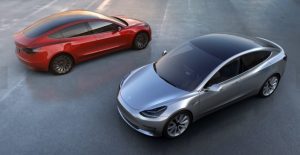 Tesla Motors marked a moment in plug-in electric vehicle history on Thursday night by unveiling what could become the first affordable electric car hitting mass-market sales; and getting hundreds of thousands of people to put money down on a car that won’t be coming out any time soon.
Tesla Motors marked a moment in plug-in electric vehicle history on Thursday night by unveiling what could become the first affordable electric car hitting mass-market sales; and getting hundreds of thousands of people to put money down on a car that won’t be coming out any time soon.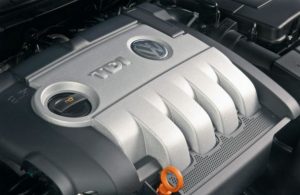 VW deadline extended and company recalling e-Golfs: Volkswagen had its March 24 deadline extended to April 21 to submit its fix for about 580,000 diesel vehicles in its emissions scandal.
VW deadline extended and company recalling e-Golfs: Volkswagen had its March 24 deadline extended to April 21 to submit its fix for about 580,000 diesel vehicles in its emissions scandal. 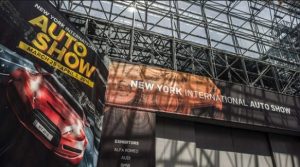 High performance luxury sports cars took center stage at this year’s New York Auto Show. New product launches included Audi’s convertible version of its R8 supercar, the R8 Spyder; the redesigned Lincoln Navigator concept luxury SUV; and the Mercedes-AMG C63/C63 S cabriolet with 503 horsepower and 516 ft-lbs. of torque in the C63 S. Fuel efficient and alternative technology vehicles wasn’t the star of the show, though it did have its presence;
High performance luxury sports cars took center stage at this year’s New York Auto Show. New product launches included Audi’s convertible version of its R8 supercar, the R8 Spyder; the redesigned Lincoln Navigator concept luxury SUV; and the Mercedes-AMG C63/C63 S cabriolet with 503 horsepower and 516 ft-lbs. of torque in the C63 S. Fuel efficient and alternative technology vehicles wasn’t the star of the show, though it did have its presence; 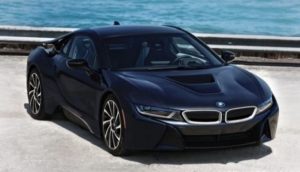 BMW’s next phase: BMW is making a move to reaffirm its top spot as the largest global luxury carmaker with announcements on the iNEXT autonomous electric vehicle, additions to the i3 and i8 models, and more versions of the high-end 7-series sedan and X7 SUV. During BMW’s annual financial press conference, CEO Harald Krueger said the iNEXT will arrive in the next 10 years and will use new sensor technology and powerful software for automated driving. Krueger said it “will set a new benchmark in this area.” The company will soon launch
BMW’s next phase: BMW is making a move to reaffirm its top spot as the largest global luxury carmaker with announcements on the iNEXT autonomous electric vehicle, additions to the i3 and i8 models, and more versions of the high-end 7-series sedan and X7 SUV. During BMW’s annual financial press conference, CEO Harald Krueger said the iNEXT will arrive in the next 10 years and will use new sensor technology and powerful software for automated driving. Krueger said it “will set a new benchmark in this area.” The company will soon launch 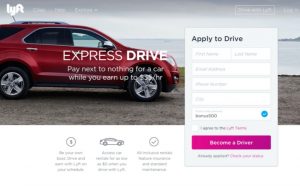 Advanced mobility continues to look tangible and coming sooner to market than it appeared a couple years ago. Google’s unveiling of its small fleet of self-driving cars for road tests in the Spring of 2014 triggered a flurry of debate about the launch of road-worthy automated cars by 2035. That timeline may be shortening to 10 years or less, at least for automated driving technologies coming to market.
Advanced mobility continues to look tangible and coming sooner to market than it appeared a couple years ago. Google’s unveiling of its small fleet of self-driving cars for road tests in the Spring of 2014 triggered a flurry of debate about the launch of road-worthy automated cars by 2035. That timeline may be shortening to 10 years or less, at least for automated driving technologies coming to market.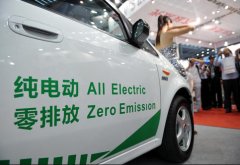 Major feature on China and EVs: Automotive News has researched the
Major feature on China and EVs: Automotive News has researched the 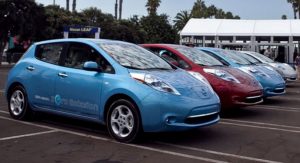 If you look at U.S. green car sales numbers, you’ll notice that the Nissan Leaf is down considerably – while others, including arch-competitor Chevrolet Volt – are up noticeably lately. The Leaf isn’t the only plug-in seeing declines in U.S sales. The BMW i3 has dropped way down this year, and Ford has announced that the Ford C-Max hybrid and plug-in hybrid will be vanishing in 2018.
If you look at U.S. green car sales numbers, you’ll notice that the Nissan Leaf is down considerably – while others, including arch-competitor Chevrolet Volt – are up noticeably lately. The Leaf isn’t the only plug-in seeing declines in U.S sales. The BMW i3 has dropped way down this year, and Ford has announced that the Ford C-Max hybrid and plug-in hybrid will be vanishing in 2018.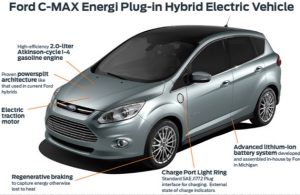 Ford changes gears on C-Max series: It was surprising to hear that Ford will be killing off the Ford C-Max Hybrid and C-Max Energi plug-in hybrid models in 2018. Sales numbers haven’t been strong enough for Ford to stay committed to the relatively new crossover hatchback models.
Ford changes gears on C-Max series: It was surprising to hear that Ford will be killing off the Ford C-Max Hybrid and C-Max Energi plug-in hybrid models in 2018. Sales numbers haven’t been strong enough for Ford to stay committed to the relatively new crossover hatchback models. 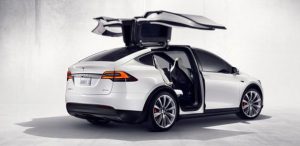 EV and hybrid sales: Plug-in electric vehicle sales were up substantially month-over-month and year-over-year – 17% over January and 6.7% over February 2014. The Tesla Model S, Chevrolet Volt, and Ford Fusion Energi saw sizable gains over last year, while the Nissan Leaf was down 22.4%.The Nissan Leaf has been declining in its position as the clear market leader, coming in fourth place for the first time, narrowly behind the Ford Fusion Energi plug-in hybrid. Tesla is continuing to take the lead in overall electric vehicle sales, with the Model S far ahead of the Chevrolet Volt and Nissan Leaf – and the recently launched Model X seeing a 25% increase in sales over January 2016. Hybrids continue to be hurt by low gasoline prices, declining to 1.8% of overall market share when it was in the 2.5% range for a long time. Sales were down nearly 10% since last year.
EV and hybrid sales: Plug-in electric vehicle sales were up substantially month-over-month and year-over-year – 17% over January and 6.7% over February 2014. The Tesla Model S, Chevrolet Volt, and Ford Fusion Energi saw sizable gains over last year, while the Nissan Leaf was down 22.4%.The Nissan Leaf has been declining in its position as the clear market leader, coming in fourth place for the first time, narrowly behind the Ford Fusion Energi plug-in hybrid. Tesla is continuing to take the lead in overall electric vehicle sales, with the Model S far ahead of the Chevrolet Volt and Nissan Leaf – and the recently launched Model X seeing a 25% increase in sales over January 2016. Hybrids continue to be hurt by low gasoline prices, declining to 1.8% of overall market share when it was in the 2.5% range for a long time. Sales were down nearly 10% since last year.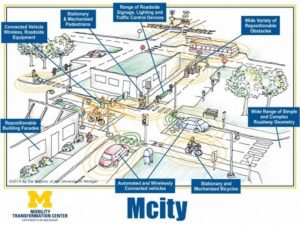 If you work in the auto industry, staying informed can be all-consuming these days – with the Takata airbag recall, the Volkswagen diesel car scandal, automakers striving to become the first one selling self-driving cars, and the impact low fuel prices is having on green car sales. There is one topic I would advise you to stay current on, as it touches upon all the rest – connected car technologies.
If you work in the auto industry, staying informed can be all-consuming these days – with the Takata airbag recall, the Volkswagen diesel car scandal, automakers striving to become the first one selling self-driving cars, and the impact low fuel prices is having on green car sales. There is one topic I would advise you to stay current on, as it touches upon all the rest – connected car technologies.